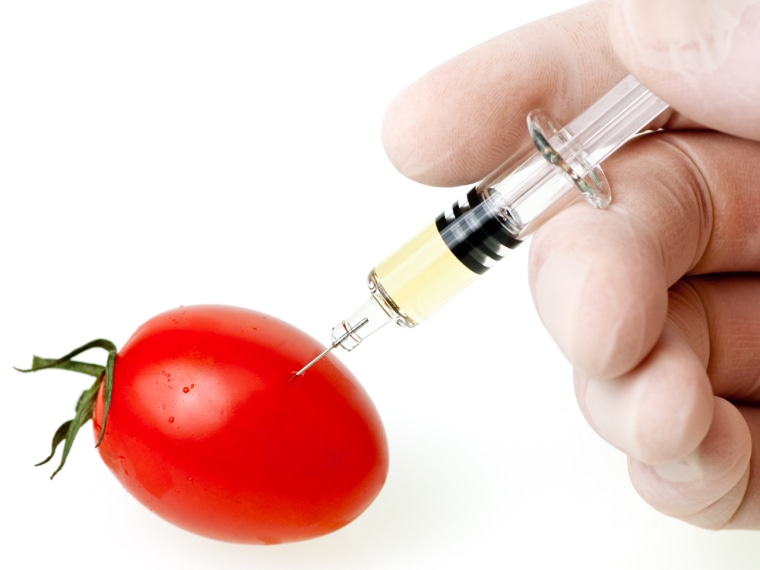
If you saw a “genetically engineered” label on a box of cereal, bag of chips, or package of tofu -- would you buy the product?
That’s a question many wonder as California voters prepare to vote on Proposition 37 next Tuesday. If approved, food manufacturers will be required by law for the first time to label all products produced from genetically modified (GM), biotech, or genetically engineered (GE) crops. “Natural,” “naturally made, “naturally grown,” and “all natural” would also be prohibited on labels and advertisements of GM foods.
Previous efforts to mandate the labeling of GM foods have failed in both Connecticut and Vermont.
Introduced commercially in the mid-1990s, GM crops are those in which DNA—the genetic material of an organism—is transferred from one organism to another in order to introduce a new trait into the organism. The resulting crops would then be disease- or pest-resistant, or be more tolerant to herbicides.
Organizations including the World Health Organization and the National Academy of Sciences believe GM foods pose no likely health risk, and proponents of the technology cite benefits including reduced cost to produce crops and increased crop yield; decreased pesticide and herbicide use; and more nutritious crops.
But critics such as the American Academy of Environmental Medicine cite evidence, primarily from animal studies, of possible health risks of GM food consumption including infertility, organ damage, gastrointestinal and immune system disorders, and accelerated aging. They also cite inadequate safety testing, although an extensive 2010 review of 50 research projects done over a decade by the European Commission found no evidence to link consumption of GM foods with higher risks of food or feed safety when compared with conventionally produced foods.
Although the FDA encourages biotech companies to voluntarily consult with them about the safety of their products before making them available to consumers, GM foods don’t need to be labeled unless they have significantly different nutritional properties, contain allergens not normally expected in the food, or contain toxins beyond acceptable amounts.
Because there’s no mandatory labeling of GM foods, there’s a good chance many of us consume them without even knowing. According to the Grocery Manufacturers Association, 75 to 80 percent of conventional processed foods currently contain GM ingredients. Among the foods most likely to contain GM ingredients include ready-to-eat cereals, snack chips, tofu and other soy-derived foods, soups, and any processed foods made with corn, soybeans, canola and cottonseed oils.
Those who support the “Yes to Prop 37” campaign believe that consumers should not be left in the dark about what’s in their food. According to one such advocate, Michele Simon, JD, MPH, author of "Appetite for Profit," “Prop 37 is an important step toward bringing America in line with 61 other nations that already require some form of GM labeling.” She also questions what she refers to as “The more than $40 million spent by leading pesticide and junk food companies to keep Californians in the dark about what they’re eating.”
Although it doesn’t support mandatory labeling, the American Medical Association recently updated their position on GE foods and called for mandatory safety testing before they hit the market.
While the Academy of Nutrition and Dietetics’ official evidence-based position on GM foods won’t be available until 2013, registered dietitian and Academy spokesperson Jeannie Gazzaniga-Moloo, Ph.D, R.D. says, “The Academy supports consumers right to know what ingredients are in the foods they purchase to feed their families.” She adds, “Those who have specific questions about foods or ingredients should contact food manufacturers directly.”
Although it’s unclear when and if all GM foods will be labeled, some consumers want to minimize their exposure. Here's what you can do:
Consider going organic, at least sometimes
According to the U.S Department of Agriculture, a food that’s labeled “organic” cannot be produced through genetic engineering. Although some organic foods unintentionally contain small amounts of GM ingredients, choosing more organic foods—especially processed ones made with corn, soybeans, canola and cottonseed oils that are more likely than many other processed foods to contain GM ingredients —can help you reduce your overall exposure. And even though there may not be enough evidence to say organic foods trump conventional ones nutritionally, a recent review in Annals of Internal Medicine found that consuming organic foods may reduce exposure to both pesticide residues and antibiotic-resistant bacteria.
Be picky with processed foods
To minimize your exposure to GM foods, look for processed foods that have a “Non-GMO Project Verified Seal” on their label. Created by The Non-GMO Project, a non-profit organization in North America; the seal indicates the product has been produced “According to consensus-based best practices for GMO avoidance.”
Mix it up
Because organic foods can be pricey, choose seasonal, local items and buy appropriate amounts based on what your family typically eats to save money and reduce waste. If you can’t afford or choose not to buy all organic food, vary your grocery list and menus weekly or monthly. For example, buy different kinds of beans, whole grains, and oils—that’ll help you vary your nutrient intake, and at the same time, minimize possible health risks associated with individual foods.
For more information on GMOs, check outthe World Health Organization website and The PEW initiative on Food and Biotechnology
More from NBCNews.com Health: